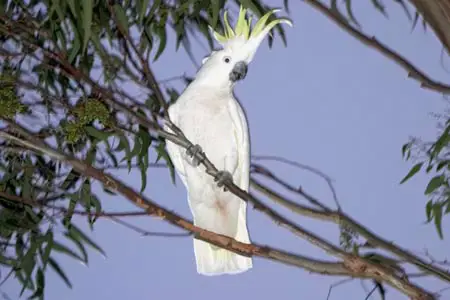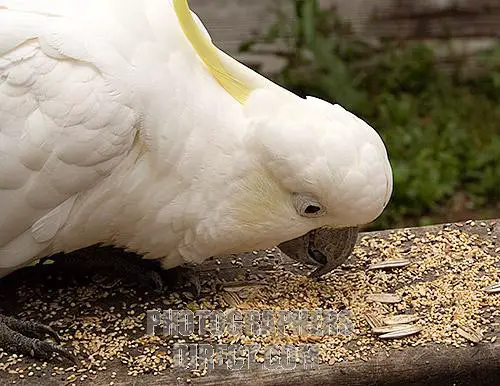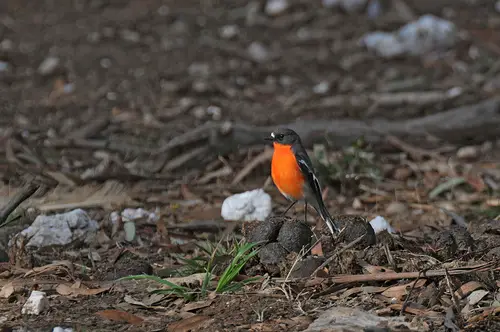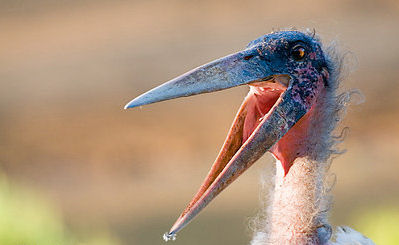Sulfur-crested Cockatoo
The Sulfur-crested Cockatoo is one of the most popular birds of Australia. The Cockatoo is known all around the world for being a friendly bird, easy to raise in captivity. In the wild, however, these birds are quite cautious and scared easily.
Sulfur-crested Cockatoo’s homeland is Australia and it lives in the Eastern and Northeastern parts of Australia, as well as New Guinea. In many Australian and New Guinean forests the Cockatoo can be observed easily, this species inhabits open territories with high trees, preferably near a water source. Parks and gardens have the perfect conditions for the Cockatoo.
The Cockatoo can reach up to 50 cm in length and 1kg in weight. Its colour is completely white, while the underwing and the tail are a tad yellowish. As the name suggests, the Sulfur-crested Cockatoo’s crest is sulfur-yellow. The crest is a tool for expressing emotions for this bird – the crest will rise if the Cockatoo is scared, aggressive or somewhat differently aroused.
In the Southern parts of their inhabited areas, the Sulfur-crested Cockatoos live in groups. In the Northern parts of its habitat, the Cockatoos live in pairs or smaller groups of 3-8 individuals. The groups choose a “home tree”, where they sleep and the birds usually stay in proximity of the tree, even if the food is scarce. Only if the area is completely unsuited, the Cockatoos will look for a new “home tree”.
Sulfur-crested Cockatoo’s diet consists mostly of seeds, nuts, berries and leaves. Sometimes the bird will also eat insects. Farmers are sometimes irritated by this bird’s presence, as the Cockatoos can pierce bags of crop with their sharp beaks and eat the grain inside. They are, however, also helpful for the farmers, as they often feed on the seeds of tare, as well as various insect eggs that would otherwise grow up to be menace for crop fields.
Unlike many other spectacular birds, the Sulfur-crested Cockatoo’s mating rituals are short and the mating partners are chosen quite fast. After copulation, the Cockatoos build a nest in a tree cavity and two to three eggs are laid. The otherwise loud and reckless birds act very quietly until the eggs hatch, not to attract any predators to the nest.
Humans have had Cockatoos as pet birds since the nineteenth century and they are still one of the most popular birds. The Cockatoos are great imitators, but they can also be very loud and become annoying very quickly. The great popularity of the bird isn’t damaging the population of the species, as most of the sold birds are bred in captivity. Currently, the Sulfur-crested Cockatoo isn’t endangered, despite many farmers’ efforts to exterminate these birds. Biggest threats to the Cockatoos are pollution of their natural habitat and aggressiveness of the local farmers.




